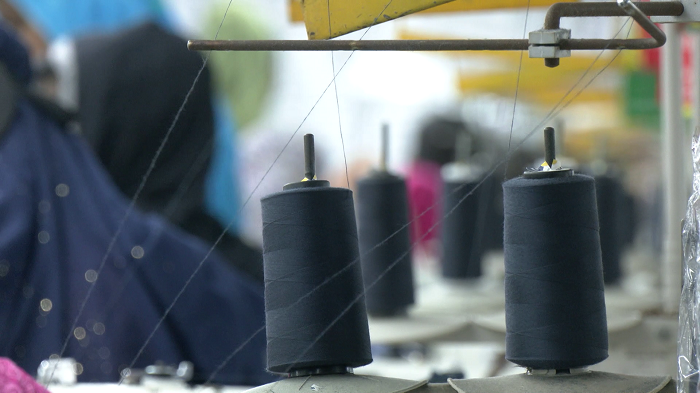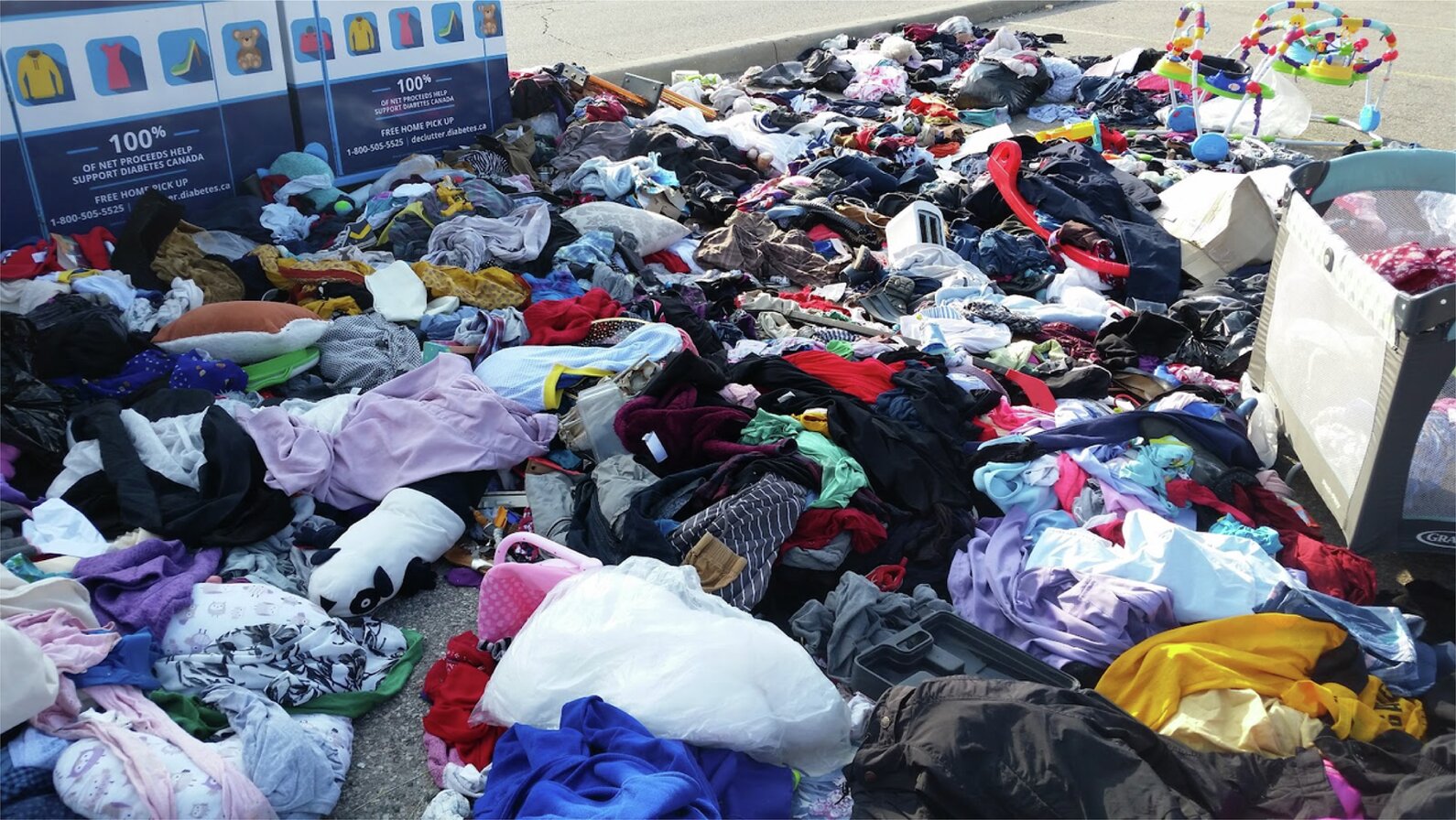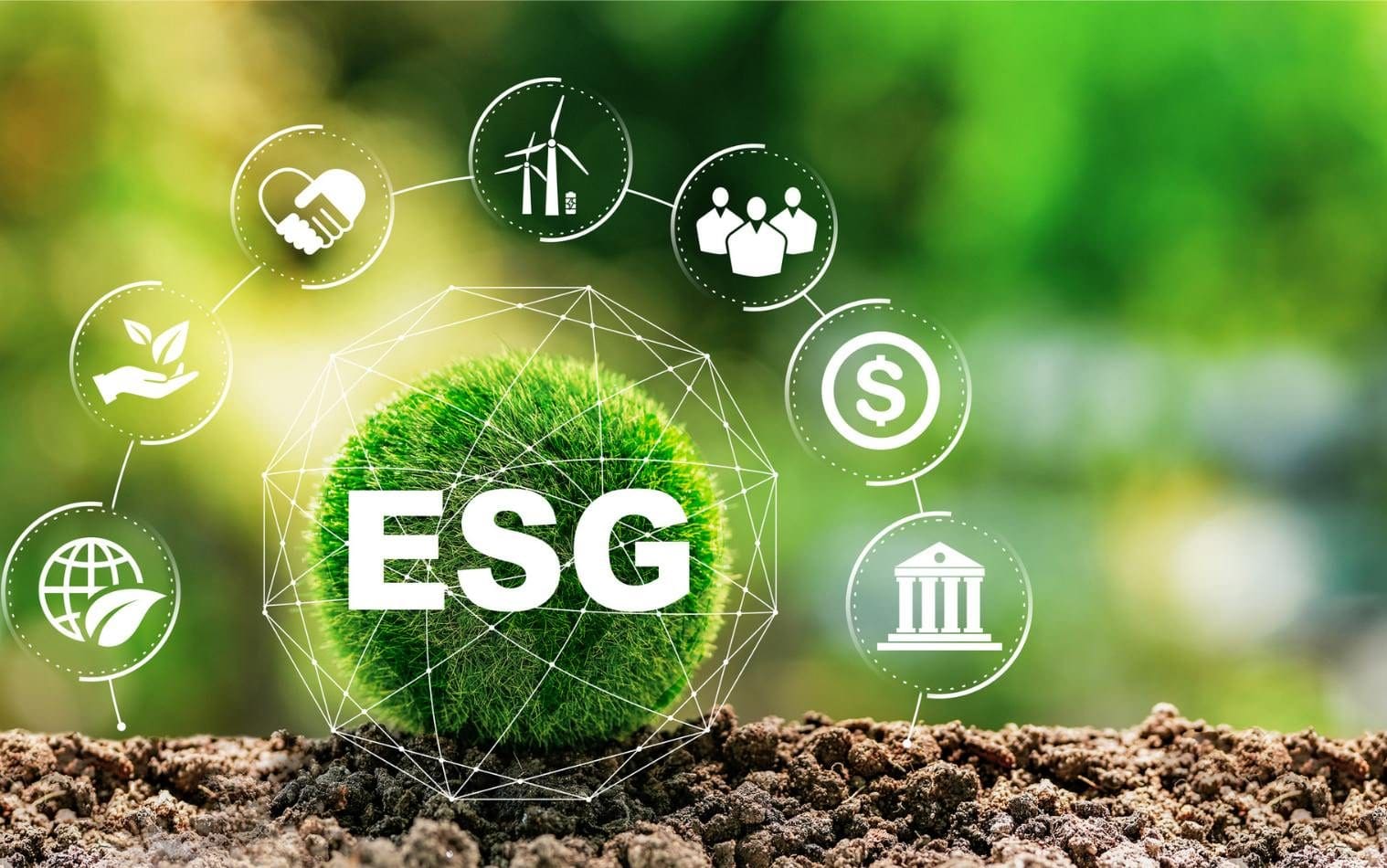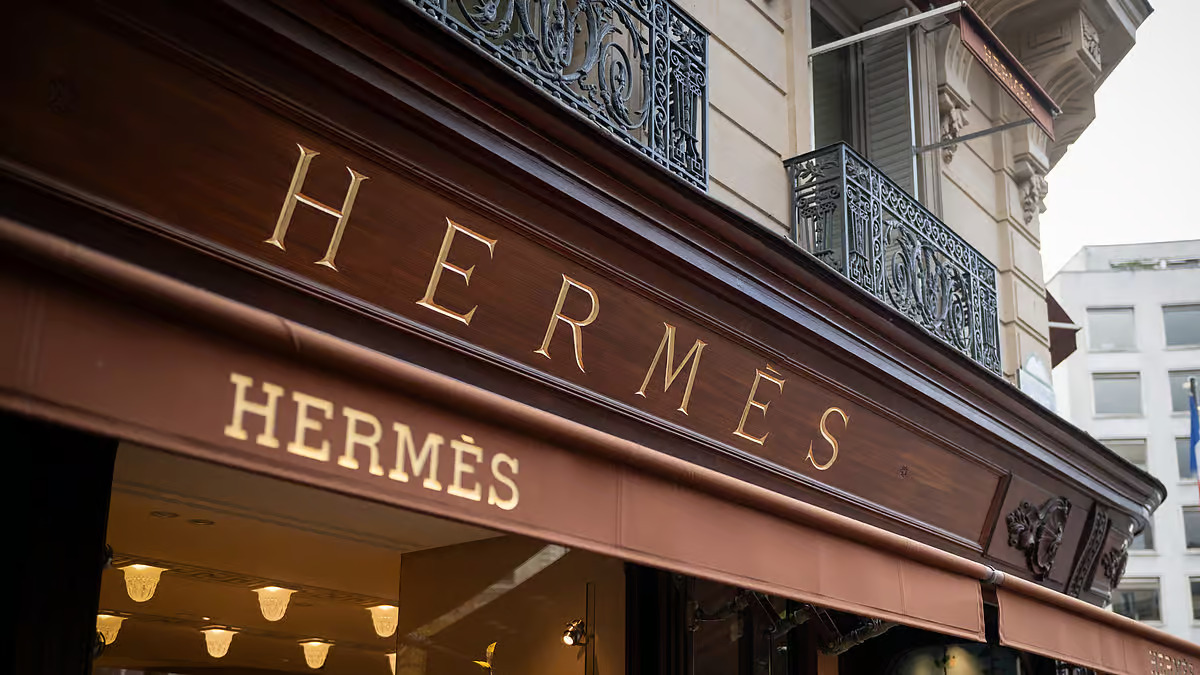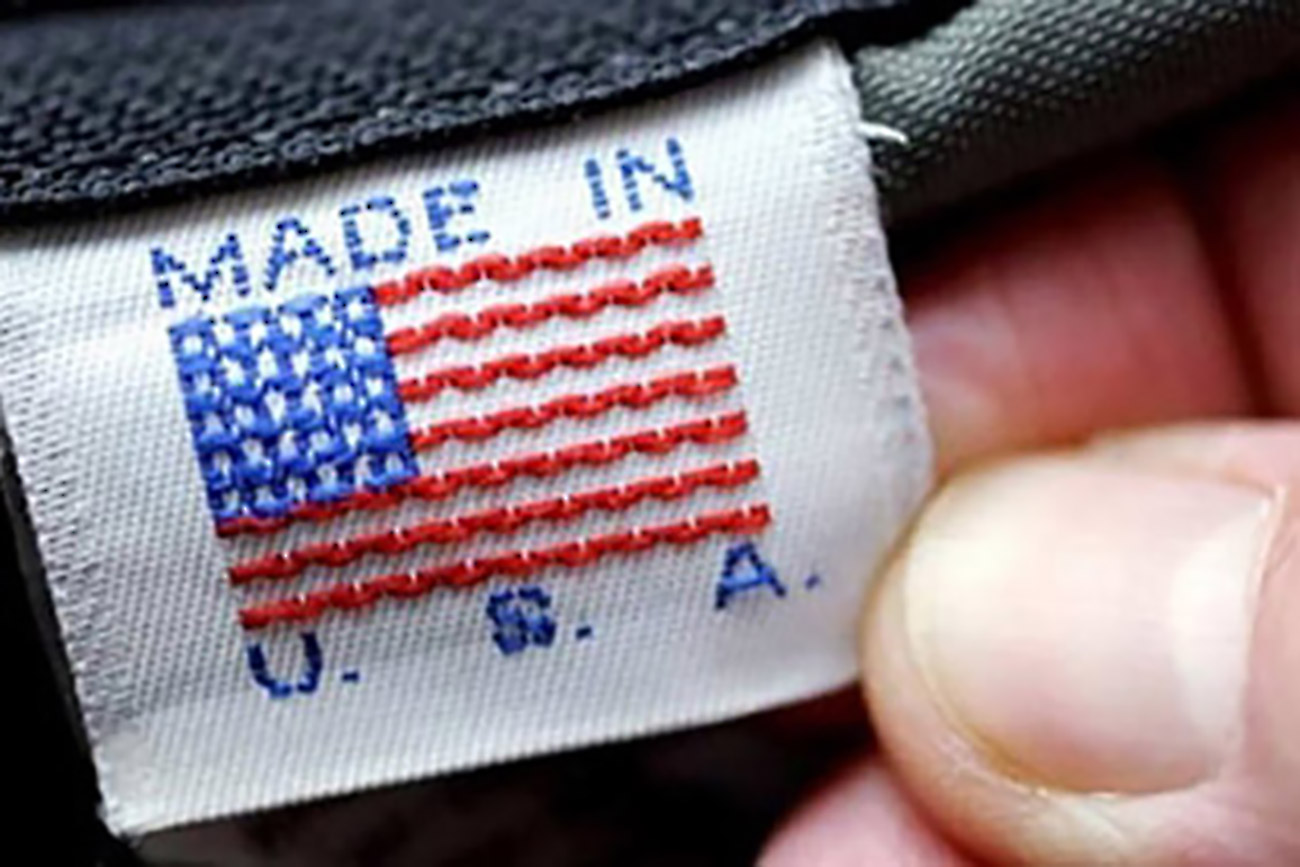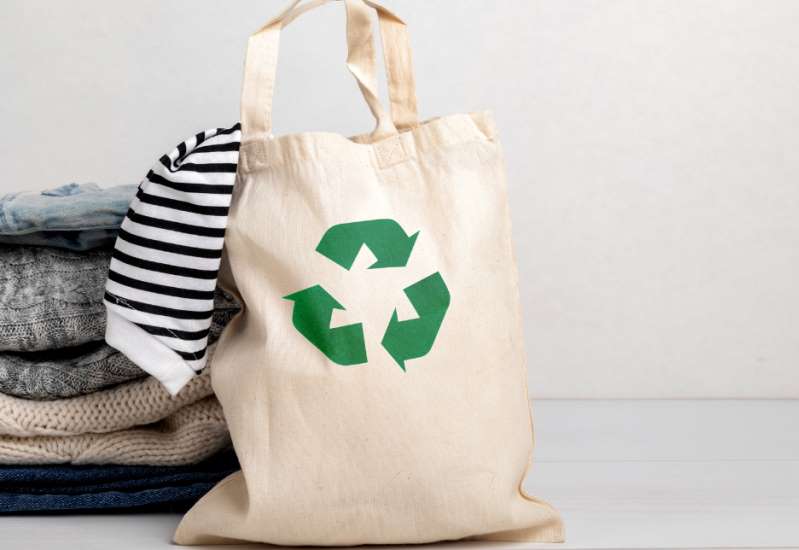Led by Javid Ahmad Tenga, President, a Kashmir Chamber of Commerce & Industry (KCCI) delegationdiscussed crucial issues affecting Kashmir’s handicraft sector with Giriraj Singh, Minister of Textiles. The meeting was held at the UdyogBhavan.
Also including ZubairMahajan, Treasurer and Shaukat Khan, Executive Committee Member, the KCCI delegationemphasised on the importance of accrediting the Pre-Export Pashmina DNA Testing Lab at SKUAST Srinagar with the National Accreditation Board for Testing and Calibration Laboratories (NABL) and the Wildlife Department. This accreditation would streamline export processes, preventing seizures and delays that often result in order cancellations and reputational damage for exporters, they said.
The delegation also highlighted concerns regarding the current Rebate of State and Central Taxes and Levies (ROSCTL) scheme for woolen and Pashmina shawls. They pointed out, the existing cap of Rs. 438 adversely affects high-value products, such as Pashmina shawls resulting in losses worth thousands or even lakhs of rupees. To prevent these losses and ensure appropriate export benefits, KCCI proposed introducing a separate Harmonised System of Nomenclature (HSN) code for value-added and Pashmina shawls.
Additionally, the delegation recommended announcing handicraft clusters in various Kashmir districts. They cited the success of Kanihama village in Budgam District, which was declared a Handloom Village due to its dense production of Kani Shawls and Pashmina. The KCCI also proposed conducting market study tours to European, Middle Eastern, and US markets to promote the export of handicrafts and other sectors.
Appreciating KCCI for raising the concerns, Singh assured the issues would be addressed soon.

A recent report by Avendus Spark paints a picture of a textile, apparel, and fashion retail sector in India on the cusp of recovery. While there are positive signs, cautious optimism is the watchword as the industry navigates a complex post-pandemic landscape.
Cautious optimism
While the report indicates a clear path to recovery, it also underscores the challenges faced by the sector. The industry is experiencing a resurgence, but the journey is far from smooth. While order books are gradually filling up, the pace is slower than pre-pandemic times, leading to shorter order cycles. The report attributes this cautious outlook to factors such as global economic uncertainties, geopolitical tensions, and evolving consumer preferences. Despite these headwinds, the sector is demonstrating resilience, with several segments showing promising growth trajectories.
The report highlights that global retailers and brands have seen their inventory levels return to pre-COVID levels, indicating a pick-up in demand. However, there's a caveat. Apparel manufacturers are yet to see a significant boost in order book momentum. This ‘cautious optimism’ suggests that order cycles might remain shorter than usual in the near future.
Cotton spinners see volume growth
One bright spot is the cotton spinning segment. Lower global cotton prices have benefitted Indian spinners, leading to a surge in volume sales. The industry's revenue grew almost 8 per cent in the last quarter of FY24 (Q4 FY24) compared to the previous year. However, a 5 per cent decline in yarn prices limited the overall value growth. Analysts expect value growth to catch up with volume growth soon as cotton prices stabilize.
Man-Made Staple Fiber (MMSF) segment witnessed a 5 per cent year-on-year revenue growth, but pricing pressures from cheaper imports limited volume expansion. Capacity constraints have also hindered growth, but upcoming capacity additions and the Production Linked Incentive (PLI) scheme are expected to boost the segment.
Home textile companies, on the other hand, are clear winners. The report states they witnessed a stellar performance in Q4 FY24 with a 16 per cent value growth, driven by strong demand and increased exports. This is further exemplified by India capturing a record-breaking 62 per cent market share in US cotton sheet imports. Fabindia, the leading Indian retailer of home textiles and apparel, serves as a real-world example of this trend. The company reported a significant increase in sales of bedsheets, towels, and other home textile products during Q4 FY24.
The report delves into the women's apparel market, which is valued at Rs 1 trillion and growing at an 11 per cent annual rate. The shift towards branded apparel is even more pronounced, growing at around 20 per cent per year. This trend is driven by increasing female workforce participation, rising disposable incomes, and evolving consumer preferences.
Challenges galore
Despite the positive trends, the industry faces several challenges, including pricing pressures due to cheaper imports from countries like China and Bangladesh. Capacity constraints have also limited growth opportunities for MMSF players.
However, the report also identifies several opportunities. The growing middle class, increasing disposable incomes, and changing consumer preferences are driving demand for branded and fashion-forward apparel. Moreover, the government's focus on textile and apparel exports through initiatives like the PLI scheme offers potential for growth.
The Avendus Spark report offers a nuanced view of the Indian textile, apparel, and fashion retail sector. While recovery is underway, challenges persist. "The industry is in a wait-and-watch mode," says an analyst at Avendus Spark. "Success will depend on factors like sustained demand growth, managing input costs, and navigating a competitive global market. However, the inherent strengths of the Indian textile sector, coupled with government initiatives, position it well for future growth."
Along with a group of British textile companies, the UK Fashion and Textile Association (UKFT) will participate in the Intertextile Shanghai Apparel Fabrics exhibition from August 27-29, 2024. The event will showcase the remarkable talent, innovation, and quality that define British design and manufacturing.
Some of the noted exhibitors at the event will include premium mills, manufacturers, and merchants like Abraham Moon, Alfred Brown, Kenneth Mackenzie, Linton Tweeds, Mallalieus, OMC England, Scabal, Schofield & Smith, and the Celtic Weaver. Additionally, creative print studios and surface specialists such as Fairbairn & Wolf Studio will be present, along with the testing house Intertek Group and trend forecaster WGSN.
Intertextile Shanghai Apparel Fabrics will provide a platform for international buyers to explore the UK's textile sector, celebrated for its tradition, innovation, and creative flair. Located in Hall 5.1, UKFT's stand will feature a diverse array of samples from UK firms. Visitors will have the opportunity to learn about the UK textile industry and watch a new film titled ‘UK Fashion & Textiles: It’s What We’re Made Of.’ The film will showcase the innovation, responsibility, and ethical practices at the core of British style, underpinned by tradition, quality, and craftsmanship.
The UK apparel and textile industry is renowned for its rich heritage, cutting-edge design, and commitment to sustainability and innovation. Intertextile Shanghai Apparel Fabrics will highlight the latest trends, sustainable fabrics, and revolutionary technologies in this industry, showcasing the creativity and craftsmanship of UK brands. A stunning array of fashion-forward collections blending tradition with modernity will be showcased at the event.
Paul Alger MBE, Director - International Business, UKFT, remarks, the UK textile industry stands out in the global market, particularly in China and Asia, due to its emphasis on quality, innovation, and unique British style. The competitive advantage of this industry lies in its ability to merge tradition with contemporary trends, offering products that are not only stylish but also ethically produced. This commitment to excellence and sustainability resonates well with consumers in these markets, helping the industry build strong, lasting relationships.

The Functional Fabric Fair, powered by Performance Days, concluded its summer edition in New York City with record-breaking attendance. The event saw an 18 per cent increase in attendees, attracting industry giants such as Calvin Klein, Hoka, L.L. Bean, Nobull, Peter Millar, Under Armour, and Vineyard Vines.
Key industry figures praise event
The fair has become a crucial event for apparel CEOs, designers, sourcing and material managers, and product development executives. With over 140 sustainable-certified suppliers, the fair showcased the latest in high-performance functional fabrics, finishes, trims, and accessories for the 2025/2026 seasons. Attendees praised the event for its focus on performance and sustainable sourcing.
The show floor was a hive of activity, featuring cutting-edge innovations, hands-on demonstrations, and interactive exhibits. These showcased the latest advancements in sustainable textiles. The event also provided numerous opportunities for education, networking, and business sourcing, setting it apart from other textile trade events.
Steve McCullough, the Event Director of Functional Fabric Fair, emphasized the event's unique offerings, which include a productive experience with a curated lineup of top vendors, an easy-to-navigate floor plan, vetted sourcing opportunities through Trend Forum displays, engaging activations, expert-led discussions, and networking opportunities designed to inspire and inform attendees.
Positive feedback and record participation
McCullough observed a high level of participation and enthusiasm at the event, noting the significant presence of returning high-caliber sourcing buyers and professionals, along with many first-time attendees. The event featured packed booths, bustling aisles, and received positive feedback from vendors, contributing to its remarkable success.
The fair featured several notable activations. In the Design Lab (LIVE), sustainable fashion designer Kelly Dempsey, known for her innovative upcycling techniques and a past contestant on ‘Project Runway,’ created a performance kimono-style jacket in real-time using materials from exhibitors. Attendees could engage with her creative process, and the final garment was auctioned for charity during the drirelease-sponsored Happy Hour, with proceeds going to Fabscrap.
Performance trend forum highlights
The Performance Trend Forum displayed highlights across 12 key categories: Baselayer, Midlayer, 2 Layer, 2.5 & 3 Layer, Lightweight & Downproof, Softshell& Outer Midlayer, Shirts, Pants & Tights, Focus Topic, Accessories & Trims, Function Meets Fashion, and New York Exclusive. This exclusive selection of 100 per cent sustainable fabrics was curated by the Experts Jury of Performance Days.
The fair also featured an Expert Talks Program, where industry experts and thought leaders led sessions on seasonal trends in colors and materials, technical aspects of performance wear fabrics, sustainability, and business development. Topics included ethical sourcing, environmental impact, regulations, and future industry forecasts, providing valuable insights for professionals looking to stay ahead in the apparel and functional fabric industries.
Looking ahead: Next edition in Portland
The next edition of the Functional Fabric Fair is scheduled for November 19-21 in Portland, OR, at the Oregon Convention Center. It will kick off with the New Day Zero Sustainability Workshop, followed by the Exhibit Hall and Expert Talks.
This successful edition of the Functional Fabric Fair not only set new records but also solidified its position as the leading trade show for sustainable functional fabrics. With its innovative offerings and strong industry support, the fair continues to be a must-attend event for professionals in the apparel industry.
Kraig Biocraft Laboratories, Inc.("Kraig Labs") has entered the rapid growth rearing phase for its third spider silk production cycle of the season. During this phase, the silkworms experience exponential growth in preparation for spinning the company's proprietary recombinant spider silk cocoons.
To support this growth, Kraig Labs has expanded its production space. The company is closely monitoring the health and performance of the silkworm colony, with reports indicating that the BAM-1 Hybrids are the most robust strain to date.
Kraig Labs has adopted a batch-rearing process to minimize overcrowding and manage the need for fresh, dry mulberry during the rainy season. This approach supports silkworm health and ensures optimal conditions for rearing and cocooning.
COO Jon Rice stated that Kraig Labs has made significant advancements in spider silk production capacity, attributing these achievements to strategic investments in facilities, equipment, silkworm genetics, and a knowledgeable team. The company is experiencing breakthroughs nearly every week as they advance their production capacities for cost-effective, commercially scalable spider silk.
This progress underscores Kraig Labs' commitment to leading the industry in spider silk production, positioning the company for continued success and innovation in the field.
From September 11 to 14, 2024, Tashkent, Uzbekistan, will host the upcoming edition of Central Asian International Textile Machinery Exhibition (CAITME), featuring 16 Italian textile machinery manufacturers. These exhibitors will showcase their innovations in a dedicated area organized by the Italian Trade Agency and ACIMIT.
Participating companies include ACIMIT members Bonino, Brazzoli, Caru, Erhardt+Leimer, Guarneri Technology, Ima, Laip, Lgl, Martex, Mei, Mesdan, Pinter Caipo Italia, Pugi Group, Sicam, Stalam, and Ugolini.
Uzbekistan, a major cotton producer and exporter, relies heavily on its textile industry for economic growth. The country's abundant raw materials and low production costs create favorable conditions for industrial development. Upgrading existing equipment is a key strategy to enhance this sector.
Italian textile technology is highly regarded by Uzbek companies. In 2023, Italy's textile machinery exports to Uzbekistan reached €21 million. Weaving machines comprised 32 per cent of these exports, followed by finishing machines at 30 per cent, spinning machines at 17 per cent, knitting machines at 14 per cent, and accessories at 7 per cent.
At CAITME 2024, Italian exhibitors will present cutting-edge textile technologies, focusing on efficiency, cost savings, and sustainability. This event underscores Italy's significant role in advancing Uzbekistan's textile industry through innovative machinery and expertise.
American fashion companies are actively diversifying their apparel-sourcing base to India amid growing risks and market uncertainties in Bangladesh, as per a study by the United States Fashion Industry Association (USFIA).
Conducted in joint venture with the University of Delware, the study, titled, ‘2024 Fashion Industry Benchmarking Study,’ highlights issues such as shipping delays, supply-chain disruptions, and geopolitical instability as top concerns for US brands and retailers in 2024.
According to this study, nearly 60 per cent of respondents plan to expand apparel sourcing from India over the next two years, surpassing plans for any other Asian country. India's advanced local textile-manufacturing capability allows for less reliance on imported components, a significant advantage over countries like Bangladesh, Cambodia, and Vietnam. Additionally, India's strategic partnership with the United States is seen as involving relatively lower geopolitical risks.
Conversely, interest in expanding apparel sourcing from Bangladesh has decreased, with only 48 per cent of respondents expressing such plans, down from 52 per cent in 2023. High social-compliance risks, including labor protests over minimum wage increases, remain a major concern. One respondent noted that while Bangladesh is known for its price competitiveness, its export potential is limited by a lack of product diversification beyond basic cotton items and knitwear.
Conducted from April to June 2024, the study surveyed executives from 30 leading fashion brands, retailers, importers, and wholesalers. It also shows increased sourcing from other Asian countries like Cambodia, Indonesia, and Pakistan, with narrowing gaps in utilization rates compared to top-tier countries.
Expressing concerns over Bangladesh losing business to competitors, FazlulHoque, Former President, Bangladesh Knitwear Manufacturers and Exporters Association (BKMEA), says, factors like high production costs, energy shortages, increased wages, and rising interest rates are eroding Bangladesh's competitive edge. Additionally, lack of duty benefits in the US market and political instability are further complicating the situation.
As per official figures from the Office of Textiles and Apparel (OTEXA), Bangladesh's RMG exports to the US fell by 12.31 per cent to $2.90 billion during the first five months of FY24. In contrast, India’s apparel exports to the US declined by just 2.06 per cent to $2.08 billion during the period.
Despite its FY 23 revenues increasing by 4 per centto €2.45 billion in 2023, the Armani Group is experiencing a slowdown its Asia market, which is affecting the group’s sales this eyar.
Having experienced a single-digit slowdown in the second half of 2023 and 2024, the Armani Group attributed it to adjustments within the luxury market, particularly in the Asia ex-Japan region and the more accessible segment of their offerings. This decline was evident in H2, FY23 and continued into the H1, FY24, contrasting with an exceptionally strong H1, FY23.
The slowing of growth in China, the world's second-largest economy and a crucial market for luxury goods, has impacted sales for major fashion brands. For instance, the world's largest luxury group, LVMH recorded 14 per centdecline in net profit during H1, FY24 amidst an uncertain economic environment.
Despite these challenges, the Armani Group's pre-tax net profit rose by 4.4 per cent to €224.5 million in FY23, with adjusted profit amounting to €523 million, compared to €519 million in 2022. The company deliberately sacrificed some margin points to avoid significantly raising retail prices, despite inflationary pressures, states Giuseppe Marsocci, Deputy General Manager
Giorgio Armani, Founder, CEO, and Chairman, emphasisedon the company's preparedness to navigate a market slowdown without prioritising maximum year-on-year profit at all costs. This cautious approach aims to sustain the brand's long-term stability and reputation in the luxury market.
One of India’s leading knitwear manufacturers and exporters, Tiruppur-based Eastman Exports, has appointed Ritesh Kumar as its new CEO.
Armed with over 25 years of experience in the garment industry, Kumar is expected to drive the growth of Eastman Exports and strengthen its position in the global market. He has previously served as Senior Vice President at Shahi Exports.
Known for supplying garments to luxury brands worldwide, Eastman Exports began its operations in the 1970s as a small dye house. The company eventually expanded into exports in 1983 and rebranded itself as Eastman Exports. Over the years, it has evolved into one of the largest vertically integrated textile manufacturers in India, offering end-to-end production capabilities.
The company boasts 35 garment manufacturing units, which collectively produce over 100 million knitted garments annually. This extensive production capacity enables Eastman Exports to cater to a wide range of high-quality apparel demands, from casual wear to luxury fashion.
The appointment of Kumar as CEO marks a significant step in the company's continued expansion and commitment to excellence in the textile industry.
With its share rising to 39 per cent of overall leasing activities, the fashion and apparel segmentdominated retail leasing in Indiaduring H1, FY24.
As per a report by CBRE South Asia, retail leasing activities in India soared to a five-year high in the first half of the current year.
From Jan-June’24, retail leasing increased to 3.1 million sq ft. across eight cities compared to the H1 period in the last five years. Retail leasing activities in the country grew at the rate of 7 per cent during the period.
The absorption was led by Bengaluru, followed by Chennai and Delhi-NCR, which accounted for nearly 59 per cent of the total leasing.
In the coming quarters, the influx of investment-grade mall supply will influence primary leasing trends with leading malls across key cities continuing to witness strong demand for secondary spaces.
Indian cities are also attracting global retailer from Switzerland, America and Japan looking to expand their presence in India, the report highlights. In H1, FY23, about 0.5 million sq ft. of retail space was added across Tier-Ii cities, as per the report. Tier-II cities witnessed an overall space take-up of 0.4 million sqft in H1, with the absorption dominated by Indore and Kochi, accounting for a joint share of 56 per cent, followed by Lucknow and Chandigarh, each with a 17 per cent share.
Ram Chandnani, Managing Director, Advisory and Transactions Services, CBRE India affirms, with a growing number of direct-to-consumer (D2C) brands recognising the importance of establishing a physical presence, the ongoing introduction of quality supply is expected to continue stimulating an uptick in overall space absorption in the coming quarters.
- 1
- 2
- 3
- 4
- 5
- 6
- 7
- 8
- 9
- 10
Threadbare Foundations: Bangladesh’s RMG boom hangs by Indian yarns
Bangladesh’s ready-made garment (RMG) industry is a global juggernaut. Second only to China in apparel exports, the sector is the... Read more
Global fashion brands brace for tariffs, Zara, Shein, H&M, Fashion Nova navi…
Inditex, the parent company of fast-fashion giant Zara, remains "optimistic" about its growth prospects in the United States, even amidst... Read more
Where do donated clothes go? Report debunks landfill myth, highlights global reu…
Forget the image of mountains of discarded clothing polluting landfills. A new white paper by Bank & Vogue Ltd/Ltée reveals... Read more
India-UK FTA: New opportunities beckon Indian fashion retailers and brands
The just concluded Free Trade Agreement (FTA) between India and the UK, a culmination of over three years of negotiations,... Read more
ESG backlash and the future of sustainability in textiles, apparel, and fashion
Julia Vol’s LinkedIn post, echoing the Financial Times headline ‘ESG fund outflow hit record as sustainable investing backlash grows’, strikes... Read more
Hermès' Singular Vision Pays Off: Overtakes LVMH in market cap through decades o…
In a compelling narrative of focused growth versus diversified expansion, luxury powerhouse Hermès has shown the power of brand discipline,... Read more
Price of ‘Made in America’ clothes could rise, revealing hidden costs of fast fa…
The allure of ultra-cheap clothing often masks the intricate economic and social factors that enable low prices. While online platforms... Read more
Shrinking slice of the wallet leads to dip in apparel expenditure in the US
The assertion that Americans in 2023 spent less than 3 per cent of their annual income on clothing, a significant... Read more
Luxury Under Cloud: ‘Exclusivity’ in focus as authenticity, origin, and status s…
The rarefied world of luxury goods is facing a numerous challenge that strikes at the very heart of its allure:... Read more
EU Green Deal: New ecodesign rules prioritize textiles for a sustainable future
The European Commission has released its first Working Plan under the Ecodesign for Sustainable Products Regulation (ESPR), and textiles and... Read more

